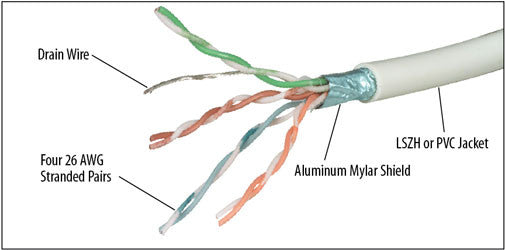Choosing Cat 6 Cable - Shielded or Unshielded?

You may already have decided that you need Category 6 Cable. Buying Cat6 cable means you will be able to receive up to 1 Gbps Ethernet transmission. Plus, Cat6 is essential for 1000 Base-T style networks. So far, so good.
But which type of Cat6 do you require? Essentially, the choice of whether to use unshielded twisted pairs (UTP) or shielded (or screened) twisted pairs (STP or ScTP) largely depends on where you're installing the cable.
As a rule, you will only need shielding when your cable is running through an area of high electro-magnetic interference or radio frequency interference (called EMI/RFI). This might be output by power line structures, large magnets or sometimes radio antennas. If you are not encountering a situation like this, then shielding won't necessarily give you any advantage in terms of a faster or clearer signal. In fact, it may make matters worse.
This is because without a shield, Cat6 UTP cable is already resistant to mild types of EMI/RFI, such as close proximity to a fluorescent light or small motor. In these cases, it's important to remember to always run the cable at a 90° angle to the source of the interference in order to minimize exposure. As long as you do this, UTP will prove to be cheaper, lighter, and just as effective as STP.
One other thing to remember with STP cable is that the shielding must drain, otherwise EMI/RFI can build up on it and degrade the signal inside. Drainage is usually done at the connection site by using a shielded coupler or shielded jack that is connected to ground.
In addition, shielded cable, while not excessively heavy, can become weighty if you are running a lot of cables in one area. Heavy cabling run above a ceiling or behind a wall has been known to cause structural damage.
So, in conclusion, Cat6 shielded cable can be a very effective protection against EMI/RFI issues. But if you really don't envisage these issues, it may not be necessary. But the STP shielded option may allow you to rest easier!
